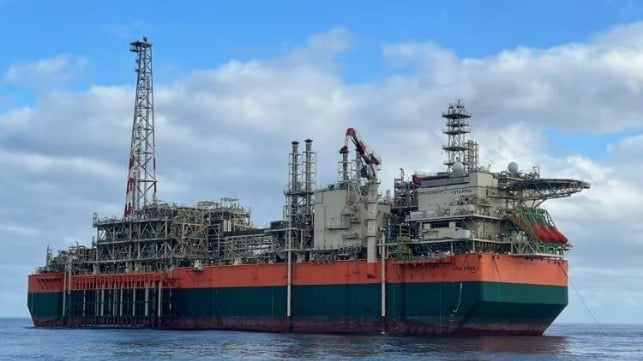BP Achieves First Gas at Major West Africa Offshore Project
Senegal and Mauritania: New Natural Gas Powerhouses

Senegal and Mauritania are on the brink of becoming significant players in the global natural gas market. This transformation follows a major milestone achieved by oil giant BP, which has successfully initiated the first gas flow from the offshore Greater Tortue Ahmeyim (GTA) project. This groundbreaking development marks the beginning of gas production in a new basin located offshore of these two West African nations. The GTA project is expected to elevate Senegal and Mauritania’s status as key hydrocarbon producers, reshaping their economic landscapes and energy sectors.
Overview of the Greater Tortue Ahmeyim Project
The Greater Tortue Ahmeyim project is a collaborative effort involving several key players in the energy sector. BP operates the project, which is being developed at a substantial cost of $4.8 billion. The project is a joint venture with U.S. operator Kosmos Energy, Mauritania’s SMH, and Senegal’s state-owned Petrosen. This initiative is notable for being one of the deepest offshore developments in Africa, with gas resources located at depths reaching up to 2,850 meters (9,350 feet).
Upon full commissioning, the first phase of the GTA project is expected to produce approximately 2.3 million tonnes of liquefied natural gas (LNG) annually for over 20 years. The initial gas flow is being directed to a Floating Production Storage and Offloading (FPSO) unit, situated about 40 kilometers (25 miles) offshore. This unit plays a crucial role in the gas processing chain, where water, condensate, and impurities are removed from the gas before it is further processed.
Gordon Birrell, BP’s Executive Vice President for production and operations, expressed enthusiasm about this achievement. He stated, “This is a fantastic landmark for this important megaproject.” He emphasized that the first gas flow is a significant step in meeting global energy demands and reinforces BP’s commitment to helping Mauritania and Senegal develop their natural resources.
Höegh LNG and Aker BP Form Strategic Partnership for Carbon Transport and Storage Solutions
Infrastructure and Future Prospects
The infrastructure supporting the GTA project is impressive. The FPSO, constructed by China’s COSCO Shipping Heavy Industry, is designed for a service life of 30 years. It measures 70 meters (230 feet) in length and has an oil storage capacity of at least 1.44 million barrels. The vessel also includes living quarters that can accommodate up to 140 personnel, ensuring that operations can run smoothly offshore.
The FPSO reached its permanent location in June 2024 and is expected to process over 500 million standard cubic feet of gas daily. The processed gas will be transported via pipeline to the Gimi FLNG vessel, which is moored at the Hub Terminal approximately 10 kilometers (6 miles) offshore. The Gimi vessel will cryogenically cool, liquefy, and store the gas before it is transferred to LNG carriers for export. A portion of the gas will also be allocated to meet the growing energy demands within Senegal and Mauritania.
The Gimi FLNG, owned and operated by Golar LNG, can store up to 125,000 cubic meters of LNG. It arrived at the GTA project in February after undergoing conversion at Singapore’s Seatrium shipyard. Originally a 1975-built Moss LNG carrier, the Gimi is designed for 20 years of operation without the need for dry docking. With a liquefaction capacity of 2.7 million tonnes per annum, it is well-equipped to handle the demands of the project.
The GTA project is based on the discovery of 120 trillion cubic feet of natural gas in 2014. The first LNG cargo for export markets is anticipated in the first quarter of this year, marking a significant milestone for both Senegal and Mauritania as they step onto the global energy stage.
